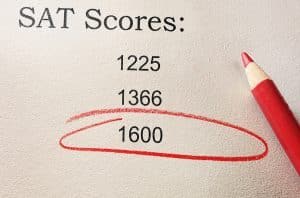What the SAT “Adversity Score” Tells Us about the Need for Personalized, Competency-Based Learning in K-12 Education
Education Domain Blog

Last week, the College Board announced the Environmental Context Dashboard, a new tool to support admissions decisions with a composite score to accompany SAT results that could provide admissions officers with more information about students’ educational and socioeconomic backgrounds. Quickly dubbed the “Adversity Score,” the announcement set off wide-ranging debates in education circles, notably at a time when sensitivities around the fairness of college admissions are high.
While the intent behind the Dashboard is admirable, missing from the discussion are important nuances about systemic barriers to student success and equitable access to higher education. The debates largely sidestep the continuation of the practice of reducing students to a single number — or two — without more meaningful ways to determine what they know and can do.
The dashboard, which has been in developmental and pilot phases for the last four years, is an outgrowth of requests by colleges themselves, hungry for more information about students that is largely absent in the SAT. Using a scale of 0–100, the resulting score fuses data on 15 factors, such as crime rates in the student’s neighborhood, its housing values, average educational attainment, and poverty levels. In addition, the score is said to capture indicators on access to equal opportunity, such as the availability of challenging coursework.
The score draws data from the FBI, Census Bureau, the National Center for Education Statistics, among other sources. Scores greater than 50 indicate the student has had to navigate more adversity to become college and career ready, and scores lower than 50 demonstrate that students have enjoyed more advantages than most of their peers. SAT-takers and high schools will not see the score; only admissions officers will. About 150 more colleges are signed up to begin using the tool next year.
We know there are talent pools with overwhelming numbers of poor, black, Latino, rural, students with disabilities, English learners and other students who are systematically denied entry to higher education and thus the opportunity to maximize their potential. It is, too, encouraging that there is some systematic thinking about how single scores erase the whole-child and the breadth and depth of their educational experiences. It is possible that students who would not have been considered for admission to some colleges will now receive a more holistic evaluation with the dashboard tool.
However, the lack of transparency to the test-taker and high schools could reap unintended consequences. Will it be possible to find new ways to rig the system? For example, could wealthier parents establish residency in less affluent zip codes if the adversity score is perceived as an advantage? Or, would some colleges deny entry to otherwise qualified students because they come from humble backgrounds? And if not, will the qualifications of less well-off students be questioned as a result of this score?
The very need for such a score puts the utility of a single, norm-referenced score of student achievement in question. Meaningful assessments of what students know and can do are available, but these require massive shifts in K-12 educational systems. But stop-gap measures that may have the unintended consequence of compounding disadvantage are not comprehensive solutions to the larger problems we face. At their best they do not tell us what two students with the same score (or GPA or credit hours) know and can do, and at their worst can unintentionally reinforce societal stratification.
In personalized, competency-based education, students are placed at the center of their learning; the learning process itself is redesigned to identify and address gaps in knowledge and skills. It ensures they proceed to the next standard or learning objective once they have mastered preceding ones. Students are empowered and equipped with extra support and time to master skills with which they have difficulty. Schools, in tandem with communities, redefine success with profiles of a graduate, that describe what each student who receives a high school diploma knows and can do as a whole person, in higher education, the workforce, community, and civic participation – regardless of zip code.
Almost all states have some permissive or enabling policy to support the implementation of competency-based education. In addition, federal programs like Perkins V give states the opportunity to strengthen postsecondary transitions and encourage the alignment of programs and credentials with personalized pathways and competency-based approaches across K-12, higher education, and the workforce. The Every Student Succeeds Act presents an opportunity for collaboration between K-12 and higher education to ensure college-readiness is a priority and that there are seamless transitions.
It is not surprising that the Environmental Context Dashboard has sparked such a lively debate. Tests like the SAT have an outsized role as gatekeepers of our students’ futures and it is to the College Board’s credit that they are thinking about how to mitigate inequity. The bigger challenge ahead of us is perfecting our democracy, such that inequities in K-12 education, wealth attainment, and biases that plague our institutions, are dealt with. Our schools can be redesigned with a foundational belief that all students can achieve at high levels with timely and relevant supports, and all students are prepared to lead our nation into the future.
Learn More:
- iNACOL – Redefining Student Success: Profile of a Graduate
- iNACOL – What’s Happening with Competency-Based Transcripts and Rethinking College Admissions in the United States
- iNACOL – Readiness for College, Career and Life: The Purpose of K-12 Public Education Today
- iNACOL – 2019 State Policy Priorities
- iNACOL – 2019 Federal Policy Priorities
- KnowledgeWorks – High School Sample Competency-Based Transcript
Maria Worthen is Vice President for Federal and State Policy, and DeQuendre Bertrand is the Director of Communications.